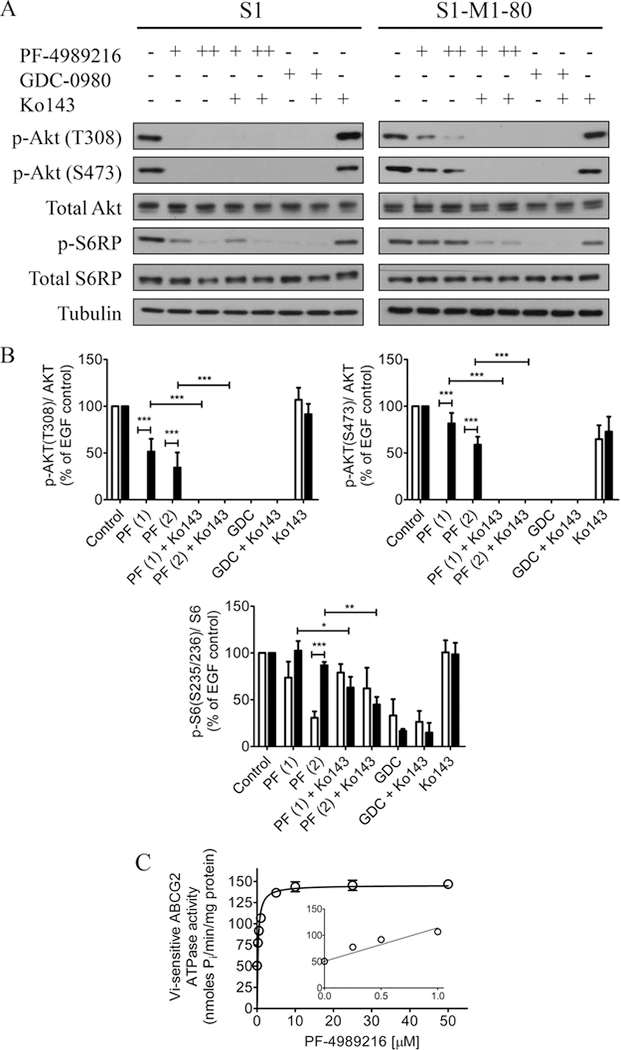Figure 2.
PF-4989216 inhibits PI3K signaling in S1 cancer cells and stimulates vanadate (Vi)-sensitive ABCG2 ATPase activity. (A) Drug-sensitive S1 and the ABCG2-overexpressing MDR subline S1-M1–80 were treated with DMSO (control), 1 μM of PF-4989216 (PF-4989216+), 2 μM of PF-4989216 (PF-4989216++), or 10 μM of GDC-0980 in the absence or presence of 1 μM of Ko 143 as indicated for 2 h before processed for immunoblotting. Human EGF (50 ng/mL) was added to the culture medium for 5 min to stimulate phosphorylation. GDC-0980 is a dual PI3K/mTOR inhibitor used here as a control, whereas Ko 143 is a reference inhibitor of ABCG2 used here to inhibit the function of ABCG2. (B) Western blot quantification of relative levels of Akt and S6 ribosomal protein phosphorylation in S1 (open bars) and S1-M1–80 (closed bars) cells. Representative Western blots are shown and values are presented as mean ± SD calculated from more than three independent experiments. *P < 0.05; **P < 0.01; ***P < 0.001, versus the same treatment in parental cells or in the presence of Ko143. (C) Crude membrane protein (50–100 μg protein/mL) from High-Five insect cells expressing ABCG2 was incubated at 37 °C with 0–50 μM and 0–1 μM of PF-4989216 (inset) in the presence or absence of vanadate. The ABCG2 ATPase activity was measured as described previously.31

